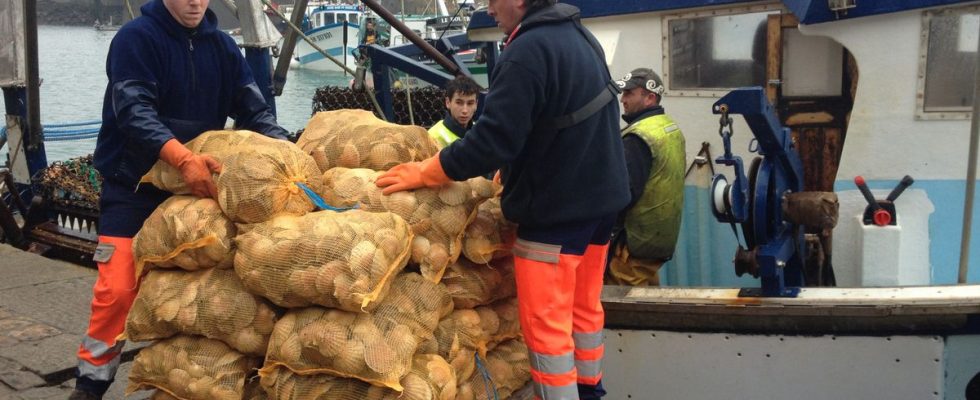Once again this year, French scallops should not be missing during the end-of-year celebrations. The mollusk population assessment campaigns carried out each yearFrench Research Institute for the Exploitation of the Sea (Ifremer), in bay of the Seine and in bay of Saint-Brieuconce again observe very high levels of abundance.
In the bay of Saint-Brieuc, we are even on a record estimate. “The total immediately exploitable biomass – shells which have reached a size of 102 mm or more – announced today is 61,300 tonnes, an increase of 30% compared to the already exceptional year 2022”, specifies Ifremer.
Record abundance in the Bay of Saint-Brieuc
This exploitable biomass could even reach 78,200 t at the end of the year (corresponding to the middle of the fishing season) depending on the growth of the shells over the season, specifies the scientific institute. The total biomass for all ages exceeds 92,000 t this year, an increase of 5% compared to 2022, which this year marks a new record in the last 62 years. The adult biomass increased by +13% compared to last year.
In the Bay of Seine, the figures do not equal the records of 2022. All the same, in the area which goes from Barfleur (Manche) to Cap d’Antifer (Seine-Maritime), the level of abundance of St. Jacques is the second highest observed in fifty years. The total exploitable biomass is estimated at more than 88,000 t, including more than 72,000 t in the Bay of Seine strictly speaking, estimates Ifremer. Unlike previous years, scientists did not observe a delay in shell growth. More than 90% of the biomass should have reached the minimum regulatory size by the opening of the fishing season.
Furthermore, Ifremer notes a high abundance of the new generation of young one-year-old shells. It exceeds all estimates made in the Bay of Seine for fifty years. “This confirms the good health of the population, and suggests record forecasts for 2024, provided that these juveniles, already large in size at the time of the campaign, are not fished before having participated in reproduction,” points out the institute.
Best since the mid-2010s
For Ifremer, these abundances, whether in the Bay of Seine or in the Bay of Saint-Brieuc, confirm for the moment the “favorable trend observed since the mid-2010s, in connection with the management put in place by the fisheries French”. The institute cites in particular the overall reduction in fishing effort through the establishment of fishing dates and times, the improvement in gear selectivity with the use of larger dredge rings, or even the establishment in the Bay of Seine of a fallow zone which changes each year.

